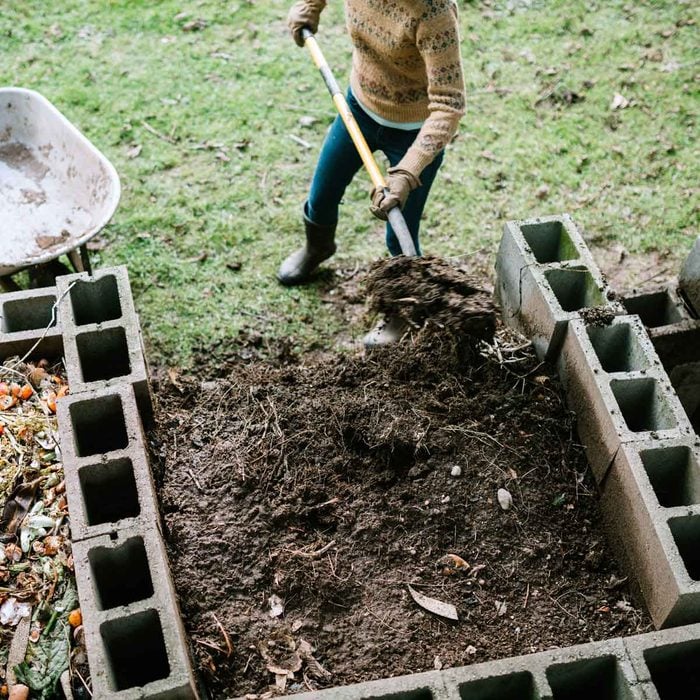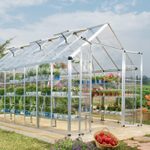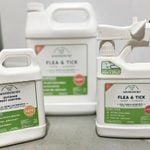What to Know About Composting

Answer all of your composting questions with this comprehensive resource.
Our editors and experts handpick every product we feature. We may earn a commission from your purchases.
Composting becomes more and more popular all the time — and for good reason. It’s healthy for the earth and your garden. And it’s a fun conversation starter. If you’re on the fence about composting, here’s what you need to know before investing any time or money.
On This Page
What Is Composting
Composting is all about recycling organic waste through natural decomposition. Instead of tossing things like dead flowers and vegetable scraps in the trash, you let them break down into an ultra-nutrient-rich substance called compost. You can buy compost from most landscape and garden centers, but it’s much less expensive and more rewarding to make your own. Plus, by keeping a pile at home, you’ll always have it on hand when you need it.
Composting Bins and Tools
There are many ways to compost. Your chosen style will dictate which tools you need. Some people use a compost bin, some prefer a simple pile and others go for a compost barrel tumbler. You can even keep a small compost bin inside if you lack yard space for a full-sized pile. If you’d rather not build a container, there are plenty of compost tools and accessories available for purchase, including this dual-chamber tumbler and this aerator. If you plan to add fruit and vegetable trimmings to your compost pile, you’ll need a rodent-resistant bin.
How to Compost
Composting is a science. It’s pretty easy to do once you have the right tools and ratio of ingredients. Let’s start with the ratio:
- One part greens;
- One part browns.
Things like grass clippings, flowers, coffee grounds and vegetable scraps are greens. These items provide nitrogen to your compost. Twigs, cardboard, sawdust and dead leaves are browns. These provide carbon. The final ingredient is water, which you’ll add as needed. These three ingredients — greens, browns and water — make up the U.S. Environmental Protection Agency’s composting basics.
Once you get your ratio right, composting is surprisingly low maintenance. Oregon Metro recommends keeping the pile damp like a wrung-out sponge. You’ll likely need to spray the pile with water to give it enough moisture, but the time between waterings depends on your local climate. Compost piles in rainy regions won’t need as much care.
Your compost pile also needs oxygen. You can turn it with a pitchfork, stir it with an aerator and tumble it in a barrel tumbler to improve the oxygen flow. You’ll want to allow the temperature to peak before you turn it, so check your pile with a thermometer. Washington State University explains that the temperature sweet spot is 135 to 160 degrees F. When the pile doesn’t have enough oxygen, the temperature will drop. That’s when you want to turn it. The University of Illinois Extension says that should take four to five weeks on average.
When kept at the right temperature with the correct amounts of water and oxygen, compost can be ready in a few months. Otherwise, the EPA says it can take up to two years. So if you’re wondering how to compost more quickly, turning and watering are key.
Composting Benefits and Disadvantages
Pros:
- Reduces the need for trash pickups, so you can reduce the frequency and save money;
- Keeps organic waste out of landfills;
- Lessens the need for lawn and garden fertilizer;
- Helps your soil retain moisture;
- Improves soil structure for sandy and clay soils;
- Balances soil nutrients and pH.
Cons:
- Takes up space in the yard;
- It can be smelly if not turned enough;
- Some find it visually displeasing;
- Requires some maintenance.
What Can Compost Be Used For?
One of the main composting benefits is its versatility. You can use it all over your yard and garden for a more lush, green space. When it looks like crumbly dirt and smells like hiking through a rainy forest, it’s ready to use.
Mulching with compost is easy and effective. Spread a half-inch layer on top of the soil at the base of your plants, and it will naturally seep down to the roots over time. The layer can also prevent weeds from popping up in your garden.
Mixing compost into the soil takes more work, but the extra time and effort pay off. Spread a one- to two-inch layer on top of your bare garden in the spring. Then, work it into the top three to five inches of existing soil. According to Earth Matter NY, this will amend any type of soil.
You can also add a handful of compost to holes when planting. It will feed the roots as the plant becomes established. This is especially good for vegetable gardens.
You can use compost in potted plants, too. Combine store-bought potting soil with homemade compost to help new additions to your container garden thrive. This is good for indoor and outdoor potted plants. You can also add an inch of compost at the base of old potted plants.
What Not to Compost
The list of what not to compost is short but crucial. Steer clear of everything on the list to ensure your pile composts correctly. The EPA advises against composting these items:
- Black walnut tree trimmings;
- Animal products such as dairy, meat, fish, bones or eggs;
- Diseased or pest-infested plants;
- Fat, grease, lard or oil;
- Pet waste, including cat litter;
- Yard waste with chemical pesticides.
Common Questions and Answers
How much space do I need to compost?
A small but workable pile is three feet by three feet, but it may not be big enough to hold all of the organic waste from a household. If you plan to compost more than just yard waste, you’ll probably need something bigger. Some people prefer to use multiple composting bins instead of one large one.
What if I don’t have a garden?
Compost can also be spread around trees, shrubs and other landscaping plants. You can add it to potted houseplants or areas of your lawn that need reseeding.
My compost pile smells. Now what?
If your pile goes anaerobic, it may start to smell like rotten eggs. The Cornell Waste Management Institute says to improve aeration by adding woodchips, straw or other dry materials. Turning more frequently will also prevent unpleasant odors.
How can I prevent my compost pile from attracting pests?
If your pile is for yard waste only, pests won’t be much of an issue. However, when adding food scraps, it’s important to cover them completely. They should be buried several inches deep into the pile.
Can I compost in the winter?
Yes, winter composting is possible. There may be some extra considerations based on where you live. In areas with heavy precipitation, you may want to shelter your pile or add more dry materials. In areas with arid winter conditions, you may need to water the pile more often.


